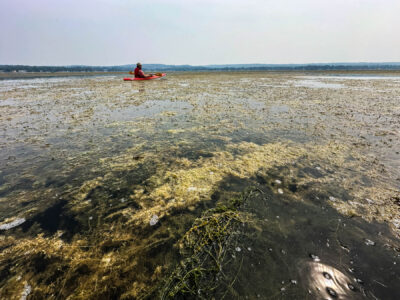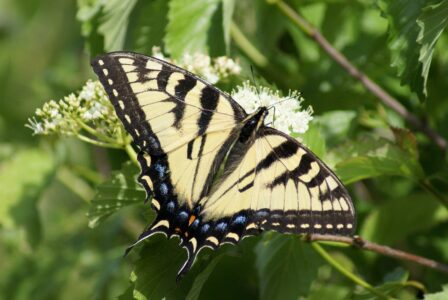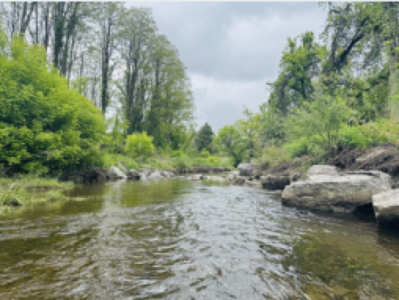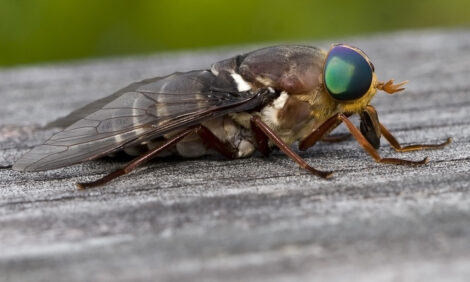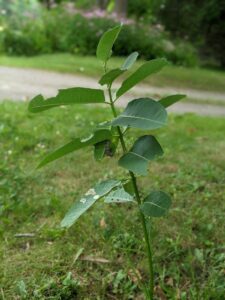Invasive Species In Western New York: Should We Be Worried?

The invasive insect Spotted Lanternfly was recently reported in Chautauqua County. Photo by WNY PRISM
Ever heard of the Spotted Lanternfly? How about the Red Swamp Crayfish? No, they’re not band names – they’re invasive species creeping into Western New York, and they could be wreaking havoc on local ecosystems. But what exactly are invasive species, and are they all that bad?
WHAT ARE INVASIVE
SPECIES?
An invasive species is non-native to the ecosystem under consideration and whose introduction causes, or is likely to cause, economic or environmental harm, or harm to human health. Invasive species may be plants, animals, or pathogens or even microorganisms that make their way into an environment where they don’t belong. Unlike a friendly neighbor who moves in next door, these species tend to overstay their welcome, disrupt the balance of native ecosystems, and sometimes cause serious damage to agriculture, wildlife, and biodiversity.
MEET THE UNINVITED GUESTS
Western New York is currently facing a number of invasive species challenges. Some notable troublemakers include:
– Spotted Lanternfly – This little pest feasts on fruit trees, vineyards, and native plants, making it a major agricultural threat. It has been spotted in the Buffalo area and was just spotted in Chautauqua County last weekend (at Hogan’s Hut General Store in Stow).
– Red Swamp Crayfish – A feisty crustacean known for burrowing into aquatic environments, causing habitat disruptions and competing with native species.
– Policemen’s Helmet (Himalayan Balsam) – This invasive plant spreads rapidly, outcompeting native vegetation and altering local landscapes.
– Wavyleaf Basketgrass – A seemingly harmless grass, but don’t be fooled! It spreads aggressively and crowds out native plant life.
Other invasives that are on the high priority list of the Western New York Partnership for Regional Invasive Species Management include Porcelain Betty, Mile-a-Minute, Slender False BRome, Amut Corktree, Scotch Broom, Water Lettuce, Water Hyacinth and Sticky Sage.
WHY SHOULD WE CARE?
At first glance, some invasive species might not seem like a big deal. After all, what’s wrong with a few extra plants or critters in the mix? But their effects can be far-reaching and often come with unintended consequences:
1. Competition with Native Species: These invaders have a knack for outcompeting native plants and animals for essential resources, sometimes driving local species to extinction.
2. Ecosystem Disruptions: They change the very structure of habitats. Think of invasive plants like kudzu that blanket forests and the sides of freeways, or aquatic species that alter water ecosystems.
3. Biodiversity Decline: When invasive species dominate a habitat, native species often get pushed out, reducing biodiversity and affecting ecological balance.
4. The Disease Factor: Some invasives bring along harmful pathogens or parasites that spread to local wildlife, leading to unexpected population declines. Think of the Pilgrams and First Nations people. Or anywhere Christopher Colombus went.
5. Food Chain Chaos: Predatory invasive species can disrupt natural food webs, leaving native species struggling to survive.
6. Environmental Degradation: Many invasive species damage soil, water quality, and vegetation, making it harder for ecosystems to recover.
FIGHTING THE INVASION
Western New York isn’t sitting idly by while these species take over. Public awareness campaigns, prevention programs, and partnerships like the WNY PRISM are working to stop their spread.
Want to help? Stay informed, and report sightings of invasive species with an amazing app called iMapInvasives. You can find it on any phone operating platform. It’s free and easy to use. It would be extremely helpful in identifying invasives that no one even knows about around where you live and play!
New York’s Invasive Species Awareness Week (NYISAW) is June 9th- 15th.
NYISAW promotes knowledge and understanding of invasive species and the harm they can cause, just like this article. Organizations across all of New York State (including the Chautauqua Watershed Conservancy) will offer a variety of engaging events, such as interpretive hikes, volunteer days, webinars, movie screenings, and fun family activities. By participating in NYISAW, you can help protect your community’s natural spaces, learn about the emerging invasive species, meet your neighbors, and get outdoors.
So, stay vigilant, report any invasives to your local environmental groups, document it in the app, and most important of all, support native plant restoration projects!
Chautauqua Watershed Conservancy is a not-for-profit organization with a mission to preserve and enhance the quality, scenic beauty, and ecological health of the Chautauqua region’s lands and waters for our community. For more information, visit chautauquawatershed.org and follow us on Facebook and Instagram.


